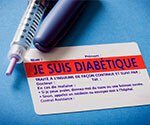 By Serena Gordon
By Serena GordonHealthDay Reporter
Latest Diabetes News
FRIDAY, Dec. 21, 2018 (HealthDay News) — Two common classes of type 2 diabetes drugs may lower blood sugar levels, but new research suggests those same drugs might boost the risk of heart attack, stroke and heart failure.
The drug classes in question are sulfonylureas and basal insulin. Sulfonylureas cause the body to release more insulin. They’re taken orally and have been used since the 1950s. Basal insulin is given as an injection, and it’s engineered to be released slowly throughout the day.
Meanwhile, the study found that newer — and typically more expensive — drugs appear to lower the risk of heart disease and stroke.
Study author Dr. Matthew O’Brien said the new findings call for a “paradigm shift in how we’re treating diabetes.”
Currently, people with type 2 diabetes are given metformin, and if they need a second treatment, they’re often given sulfonylureas or basal insulin. But these findings call that practice into question.
“People who started taking sulfonylureas and basal insulin have a much higher incidence of cardiovascular disease. So, if all the new drugs lower cardiovascular disease risk, that’s where we should go first to treat type 2 diabetes,” O’Brien explained. He is an assistant professor of general internal medicine, geriatrics and preventive medicine at Northwestern University Feinberg School of Medicine in Chicago.
But that doesn’t seem to be what’s happening in practice. Endocrinologist Dr. Joel Zonszein, director of the Clinical Diabetes Center at Montefiore Medical Center in New York City, said that only 10 percent to 15 percent of patients are being treated with the newer diabetes medications.
“Most patients are getting medications that are less effective and may be causing cardiovascular problems,” Zonszein said.
There are about a dozen different classes of diabetes medications, according to information from the American Diabetes Association (ADA). O’Brien and his colleagues began the study because there isn’t a strong consensus on which of these many drugs to use if the standard first-line treatment doesn’t work.
“When we diagnose people with type 2 diabetes, we give them metformin because that’s what the expert groups all recommend. But if metformin is no longer effective or a patient has gastrointestinal intolerance, it’s kind of a dealer’s choice for what to treat with next. No one knows which is best. We wanted to get some clarity on what the next best medication is,” O’Brien said.
The study looked at more than 130,000 insured adults with type 2 diabetes who were starting therapy with a second-line anti-diabetes medication. The information came from U.S. insurance claims data from 2011 to 2015.
The study participants were aged 45 to 64, and the average follow-up time was 1.3 years.
Treatment with the medication classes known as DPP-4 inhibitors (Januvia, Tradjenta, Onglyza), SGLT-2 inhibitors (Invokana, Farxiga, Jardiance) and GLP-1 agonists (Byetta, Trulicity, Victoza) were all associated with approximately a 20 percent reduction in the risk of complications, such as heart disease and stroke.
Sulfonylureas were associated with 36 percent higher odds of complications, while basal insulin was associated with nearly twice the risk of heart disease and stroke complications, the investigators found.
O’Brien said because the study is observational, it cannot prove whether it’s the medications or an issue with the people taking them that causes the increased cardiovascular risk. He said that people taking insulin tended to be sicker, which may have influenced those findings. However, the researchers controlled the data to account for a number of factors, such as age, blood sugar control and other illnesses.
O’Brien thinks there should be a change in practice now. “I think we have enough evidence from our study and others that sulfonylureas and basal insulin should no longer be the default for a second choice,” he said.
Zonszein agreed, and noting the benefits of newer medications, he suggested that they should be used sooner rather than later.
“I think the newer diabetes medications should be used with metformin from the beginning. These newer drugs help with weight loss, they don’t really cause hypoglycemia [low blood sugar] and they help prevent cardiovascular disease,” Zonszein said.
O’Brien stressed, however, that no one should stop taking medication without talking to their doctor. Instead, he said to have a conversation with your doctor and ask whether or not your current medication is the best choice for you. If it’s a matter of insurance payment, he said your doctor may be able to work with your insurance company to get you a newer diabetes medication, if that’s the best choice for you.
Examples of sulfonylureas include chlorpropamide (Diabinese), glimepiride (Amaryl), glipizide (Glucotrol) and glyburide (Micronase, Glynase, and Diabeta). Examples of basal insulins include glargine (Lantus, Toujeo), detemir (Levemir) and degludec (Tresiba).
The findings were published online Dec. 21 in JAMA Network Open.

Copyright © 2018 HealthDay. All rights reserved.
SOURCES: Matthew O’Brien, M.D., assistant professor of general internal medicine, geriatrics and preventive medicine, Northwestern University Feinberg School of Medicine, Chicago; Joel Zonszein, M.D., director, Clinical Diabetes Center, Montefiore Medical Center, New York City; Dec. 21, 2018, JAMA Network Open, online





